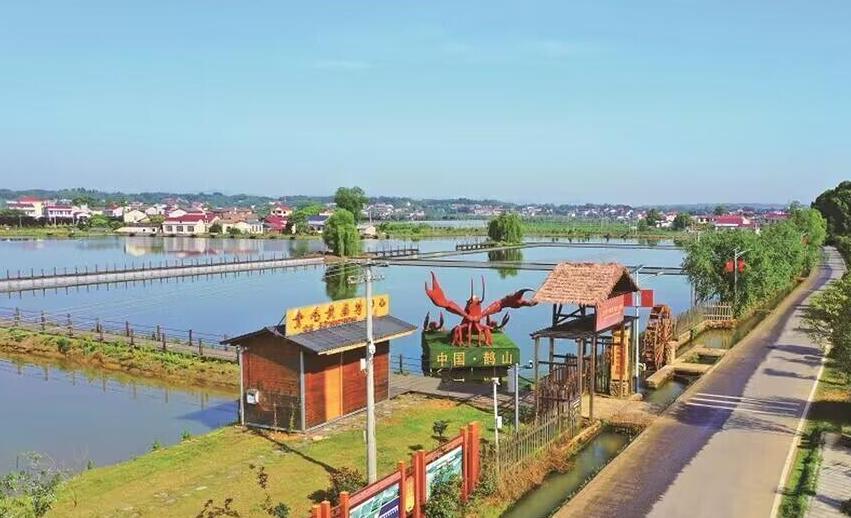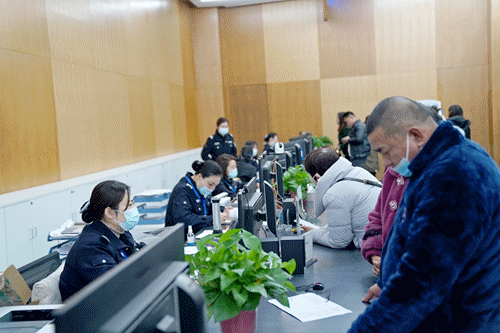Changsha makes concerted efforts in anti-epidemic battle
Epidemic prevention and control is both a battle and a test for all. As the basic units of a city, sub-districts, communities, townships and villages are the front lines in the anti-epidemic battle, epidemic prevention and control efforts should be strengthened in these places to safeguard the city and its people's lives.
Party members in urban and rural areas all take the lead in this anti-epidemic battle. Grassroots cadres and volunteers do their best to register information and publicize anti-epidemic knowledge. They fulfill their mission with great fortitude and enthusiasm, which gives the general public power and confidence to fight against the epidemic.
Xiangjiang Century City, the largest residential community in Hunan Province, is located along the Xiangjiang River, which accommodates more than 80,000 residents. Among its three communities in Kaifu District, Jintailu Community in Furong North Road Sub-districts is the most populous one where more than 40,000 residents live in.
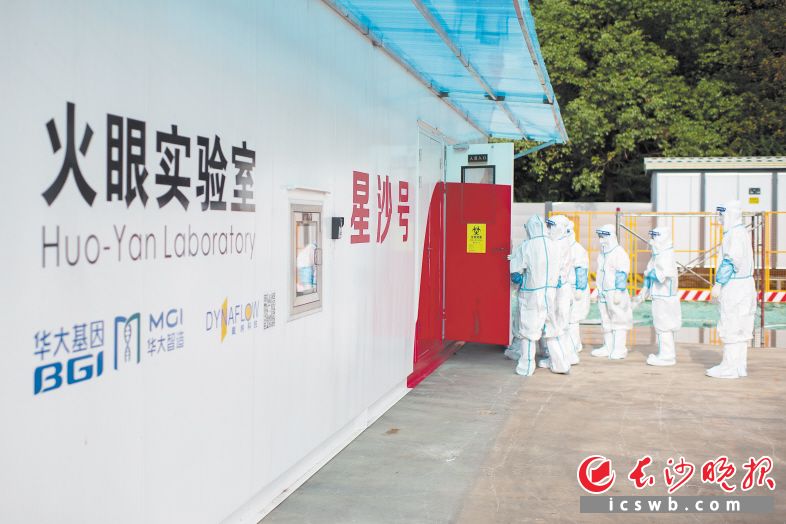
“Cleaners clean elevators with alcohol, mop floors with 84 disinfectant and clear away garbage regularly.” At 7:00 a.m, relevant personnel will send the pictures of cleaners doing the disinfection work in the Wechat group of each residential building. The community workers will be on duty at all important positions to strictly conduct preventive measures like checking the QR health code and taking temperature, which have become a routine for residents.
In this anti-epidemic battle, all districts in Changsha have immediately implemented preventive measures. Residential areas and business districts all take scientific measures for epidemic prevention while publicizing anti-epidemic knowledge in attractive ways. All sectors of the city shoulder their responsibility with actual deeds,
Wanda Plaza, with a construction area of more than 700,000 square kilometers, is the largest office building in Changsha, which covers 5 office buildings and more than 1,000 companies. How does the Plaza—one of the most populous venue, implement preventive measures?
“We work in the ‘cloud’ of the building and feel that the epidemic prevention measures here are as strict as those of airports,” said Tan Nina who works in the building C2. When entering into the office building, people are required to take temperature and show their health and traveling codes.
What’s more, the whole business district conducts disinfectant measures at least twice a day, especially on handles of toilet doors and elevator buttons. The strict preventive measures build a defense line of security .
Technological publicity ways make the anti-epidemic knowledge more pervasive among the general public.
“Come and see, what’s wrong with our TV?” Ms. Zhang called out to her husband. On the early morning of August 11, Ms. Zhang, who lives in Yingcaiyuan Community, Yinpenling Sub-district, Yuelu District, turned on her TV and found that the screen showed anti-epidemic videos and slogans like “Preventive measures are countless, but wearing masks is foremost”.
To make the anti-epidemic publicity more pervasive, Yinpenling Sub-district, together with Hunan IPTV, has established a smart TV platform. Apart from the columns like daily information and convenience services, the platform puts emphasis on anti-epidemic publicity, through which residents can easily get relevant knowledge at home.
In these basic units, numerous people have come forward who do all they can to build a “safety net” for the city.
Anti-epidemic efforts in rural areas
In order to prevent the countryside from becoming the weak zones for epidemic prevention, Party members, cadres, and grassroots workers worked hard according to the requirements of strict, meticulous, practical and accurate measures and implemented epidemic prevention and control measures with joint action and efforts.

Efforts to prevent imported epidemic cases
The situation of epidemic prevention and control has become severe since the end of July in Liuyang West District, which is adjacent to Zhuzhou. At noon on August 10, four workers on duty at the Shiwei epidemic prevention and control checkpoint in Puguan Village, Puji Town, Liuyang City, went immediately to check the health code and travel code, take the temperature and register the movement information when a car drove from the county road X018.
There is heavy traffic on this county road as well as another village road that serve as the main passages connecting Puji and Zhuzhou, which makes it more difficult to conduct epidemic prevention and control. In order to solve the problem of insufficient manpower at the two checkpoints, the local government issued a notice of volunteer recruitment, which attracted more than 100 people including party members, veterans, and college students to sign up in a short period of time. The staff work in three shifts to guard the west gate of Liuyang City with responsibility and sweat.
"For more than 10 days, we have not found a single case of yellow and red health code." Lou Ting, secretary of the general party branch of Puguan Village, said with satisfaction. “All the effort is worth it for the epidemic prevention and control work.”
Efforts to weave an "epidemic prevention net" on the front line
"A villager in Shapotang group has just come back from Jiangsu today. We are going to check his specific situation now. Who will go with me?" Seeing the message from the Wechat group of epidemic prevention and control in Zhanshui Village, Qiaokou Town, Wangcheng District, the village doctor Yang Xiong immediately responded and came to carefully check the villager's health code and travel code, measure his body temperature, and register the information, and meanwhile, inform him to strictly implement the epidemic prevention measures of home health monitoring and nucleic acid testing.
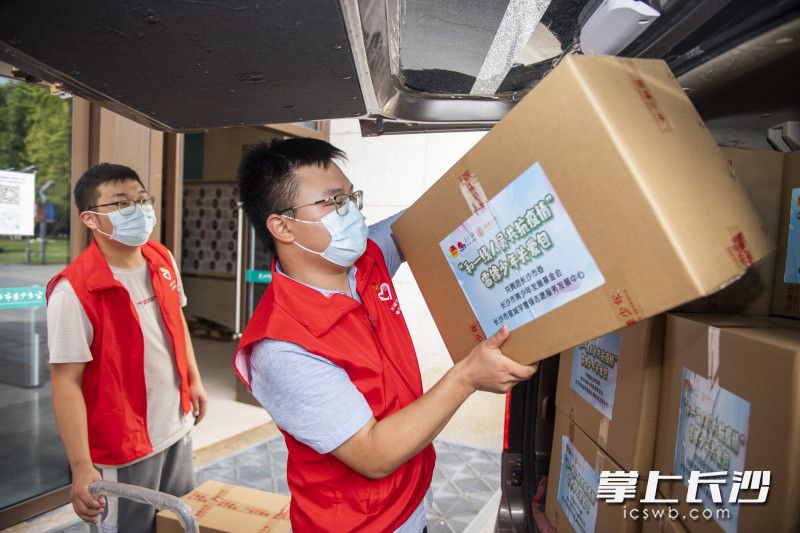
The task of epidemic prevention and control is heavy in Qiaokou Town located at the junction of the four counties (cities) of Yiyang, Yueyang, Ningxiang, and Wangcheng, where many migrant people live. The town divides its 7 villages and 1 community into 167 grids to register the migrant population, especially those ever living in areas with medium and high risks. Within the grids, a series of scientific prevention and control measures and publicity were also conducted to precisely activate the "nerve endings" for epidemic prevention.
In Zifu Town, Ningxiang City, "grid management plus door-to door service" also aids to build an anti-epidemic fort. "Please keep a distance of one meter in an orderly manner, and be patient." At about 5 in the morning, just after the dawn, the party members came to the vaccination point, where villagers lined up at an interval according to the requirements of epidemic prevention. The whole process is orderly and efficient.
8 villages (communities) in Zifu town are divided into 99 grids, which facilitates the contact between primary-level units and their superior. A prevention and control responsibility system of “six staff members serve one person” is also established, which means that 1 township leader, 1 township cadre, 1 village (community) cadre, 1 medical worker, 1 public security police and 1 full-time administrator are specially assigned to serve one who has the high risk of infection, including taking their temperature regularly and controlling their ranges of activity.
At the same time, based on big data, the town launched a comprehensive investigation into the movement of the permanent population since July to build a firm epidemic defense line.
Joint efforts made in epidemic prevention
It can be seen through the medical microscope that whenever a virus invades the human body, white blood cells will quickly gather to surround, swallow, and destroy the virus.
To prevent the epidemic from invading the "body" of the city, many loving cells gathered together in the name of "volunteers". In Changsha, volunteers making concerted efforts to prevent the epidemic can be seen everywhere, like party members who take the lead in setting an example and citizens who help each other. Ni Kangmei, a volunteer in Niujiaotang Community, Zuojiatang Street, Yuhua District, arrived at the community detection site early in the morning to check the health code and travel code of the residents.
Last year, the community converted three abandoned pump houses into "caring people points, and thus established an assistance team of nearly 50 people. At present, members of the assistance team have turned into epidemic prevention volunteers, each of whom jointed in the anti-epidemic efforts—conducting information investigation, community disinfection and sterilization, and epidemic prevention publicity.
Every time when residents pass by the point, they can hear Zeng Soyi, an old party member, telling people the "epidemic prevention tips", “when taking your mask off, try not to touch the outside, fold it from the inside, tie it with the strap, and put it into the designated bin.”
"As a college student, I have a responsibility to do my part for epidemic prevention." These days, in Jiucaiyuan Street, Furong District, Lian Yun, a "post-00s" boy, has been active on the frontline of epidemic prevention as a volunteer.
What is touching is that he works jointly with his mother Chen Jing who is a staff member of Jiucaiyuan Street. Seeing his mother going out early and returning late every day, Lian Yun took the initiative to put on the "Lei Feng Volunteer" red armband to support the fight against the epidemic with practical actions.
In the morning, the two check data on the phone and input the information; in the afternoon, they patrol the community and give out epidemic prevention leaflets to hotels, supermarkets, farmers' markets, and restaurants along the street. When the community carries out nucleic acid testing and sampling, Chen Jing registers the information, while Lian Yun sprays alcohol and takes body temperature at the entrance.
"It is not safe to ride an electric bike for an elderly man like you. I will drive you to get a vaccine." Hearing the words of volunteer Zhang Yongsheng, a gray-haired old man nodded repeatedly. There are many elderly residents over 60 years old in Guangda Community, Huangxing Town, Changsha County. The Service Team for the Elderly composed of nearly 20 people has not only provided assistance for the elderly who need to go out for vaccination, but also for residents who could not present their health codes due to having no smart phones.
" The volunteers will pick my friends up on time to get vaccination as long as they inform in advance," said an elderly man in his seventies as he raised a piece of paper in his hand, which turns out to be the health code printed for the elderly without smartphones. Volunteers from the “Service Team for the Elderly” even paired up with elderly people living alone in the community to bind health codes with their phones so that the elderly can print them when they go out. In normal life, volunteers also take care of the elderly in various ways.
Numerous people practice the original mission on the front line of epidemic prevention and control. Their perseverance, fearlessness and dedication are converging into a strong force for Changsha to fight against the epidemic and protect the beauty and tranquility of the city.
Party members in urban and rural areas all take the lead in this anti-epidemic battle. Grassroots cadres and volunteers do their best to register information and publicize anti-epidemic knowledge. They fulfill their mission with great fortitude and enthusiasm, which gives the general public power and confidence to fight against the epidemic.
Xiangjiang Century City, the largest residential community in Hunan Province, is located along the Xiangjiang River, which accommodates more than 80,000 residents. Among its three communities in Kaifu District, Jintailu Community in Furong North Road Sub-districts is the most populous one where more than 40,000 residents live in.

“Cleaners clean elevators with alcohol, mop floors with 84 disinfectant and clear away garbage regularly.” At 7:00 a.m, relevant personnel will send the pictures of cleaners doing the disinfection work in the Wechat group of each residential building. The community workers will be on duty at all important positions to strictly conduct preventive measures like checking the QR health code and taking temperature, which have become a routine for residents.
In this anti-epidemic battle, all districts in Changsha have immediately implemented preventive measures. Residential areas and business districts all take scientific measures for epidemic prevention while publicizing anti-epidemic knowledge in attractive ways. All sectors of the city shoulder their responsibility with actual deeds,
Wanda Plaza, with a construction area of more than 700,000 square kilometers, is the largest office building in Changsha, which covers 5 office buildings and more than 1,000 companies. How does the Plaza—one of the most populous venue, implement preventive measures?
“We work in the ‘cloud’ of the building and feel that the epidemic prevention measures here are as strict as those of airports,” said Tan Nina who works in the building C2. When entering into the office building, people are required to take temperature and show their health and traveling codes.
What’s more, the whole business district conducts disinfectant measures at least twice a day, especially on handles of toilet doors and elevator buttons. The strict preventive measures build a defense line of security .
Technological publicity ways make the anti-epidemic knowledge more pervasive among the general public.
“Come and see, what’s wrong with our TV?” Ms. Zhang called out to her husband. On the early morning of August 11, Ms. Zhang, who lives in Yingcaiyuan Community, Yinpenling Sub-district, Yuelu District, turned on her TV and found that the screen showed anti-epidemic videos and slogans like “Preventive measures are countless, but wearing masks is foremost”.
To make the anti-epidemic publicity more pervasive, Yinpenling Sub-district, together with Hunan IPTV, has established a smart TV platform. Apart from the columns like daily information and convenience services, the platform puts emphasis on anti-epidemic publicity, through which residents can easily get relevant knowledge at home.
In these basic units, numerous people have come forward who do all they can to build a “safety net” for the city.
Anti-epidemic efforts in rural areas
In order to prevent the countryside from becoming the weak zones for epidemic prevention, Party members, cadres, and grassroots workers worked hard according to the requirements of strict, meticulous, practical and accurate measures and implemented epidemic prevention and control measures with joint action and efforts.

Efforts to prevent imported epidemic cases
The situation of epidemic prevention and control has become severe since the end of July in Liuyang West District, which is adjacent to Zhuzhou. At noon on August 10, four workers on duty at the Shiwei epidemic prevention and control checkpoint in Puguan Village, Puji Town, Liuyang City, went immediately to check the health code and travel code, take the temperature and register the movement information when a car drove from the county road X018.
There is heavy traffic on this county road as well as another village road that serve as the main passages connecting Puji and Zhuzhou, which makes it more difficult to conduct epidemic prevention and control. In order to solve the problem of insufficient manpower at the two checkpoints, the local government issued a notice of volunteer recruitment, which attracted more than 100 people including party members, veterans, and college students to sign up in a short period of time. The staff work in three shifts to guard the west gate of Liuyang City with responsibility and sweat.
"For more than 10 days, we have not found a single case of yellow and red health code." Lou Ting, secretary of the general party branch of Puguan Village, said with satisfaction. “All the effort is worth it for the epidemic prevention and control work.”
Efforts to weave an "epidemic prevention net" on the front line
"A villager in Shapotang group has just come back from Jiangsu today. We are going to check his specific situation now. Who will go with me?" Seeing the message from the Wechat group of epidemic prevention and control in Zhanshui Village, Qiaokou Town, Wangcheng District, the village doctor Yang Xiong immediately responded and came to carefully check the villager's health code and travel code, measure his body temperature, and register the information, and meanwhile, inform him to strictly implement the epidemic prevention measures of home health monitoring and nucleic acid testing.

The task of epidemic prevention and control is heavy in Qiaokou Town located at the junction of the four counties (cities) of Yiyang, Yueyang, Ningxiang, and Wangcheng, where many migrant people live. The town divides its 7 villages and 1 community into 167 grids to register the migrant population, especially those ever living in areas with medium and high risks. Within the grids, a series of scientific prevention and control measures and publicity were also conducted to precisely activate the "nerve endings" for epidemic prevention.
In Zifu Town, Ningxiang City, "grid management plus door-to door service" also aids to build an anti-epidemic fort. "Please keep a distance of one meter in an orderly manner, and be patient." At about 5 in the morning, just after the dawn, the party members came to the vaccination point, where villagers lined up at an interval according to the requirements of epidemic prevention. The whole process is orderly and efficient.
8 villages (communities) in Zifu town are divided into 99 grids, which facilitates the contact between primary-level units and their superior. A prevention and control responsibility system of “six staff members serve one person” is also established, which means that 1 township leader, 1 township cadre, 1 village (community) cadre, 1 medical worker, 1 public security police and 1 full-time administrator are specially assigned to serve one who has the high risk of infection, including taking their temperature regularly and controlling their ranges of activity.
At the same time, based on big data, the town launched a comprehensive investigation into the movement of the permanent population since July to build a firm epidemic defense line.
Joint efforts made in epidemic prevention
It can be seen through the medical microscope that whenever a virus invades the human body, white blood cells will quickly gather to surround, swallow, and destroy the virus.
To prevent the epidemic from invading the "body" of the city, many loving cells gathered together in the name of "volunteers". In Changsha, volunteers making concerted efforts to prevent the epidemic can be seen everywhere, like party members who take the lead in setting an example and citizens who help each other. Ni Kangmei, a volunteer in Niujiaotang Community, Zuojiatang Street, Yuhua District, arrived at the community detection site early in the morning to check the health code and travel code of the residents.
Last year, the community converted three abandoned pump houses into "caring people points, and thus established an assistance team of nearly 50 people. At present, members of the assistance team have turned into epidemic prevention volunteers, each of whom jointed in the anti-epidemic efforts—conducting information investigation, community disinfection and sterilization, and epidemic prevention publicity.
Every time when residents pass by the point, they can hear Zeng Soyi, an old party member, telling people the "epidemic prevention tips", “when taking your mask off, try not to touch the outside, fold it from the inside, tie it with the strap, and put it into the designated bin.”
"As a college student, I have a responsibility to do my part for epidemic prevention." These days, in Jiucaiyuan Street, Furong District, Lian Yun, a "post-00s" boy, has been active on the frontline of epidemic prevention as a volunteer.
What is touching is that he works jointly with his mother Chen Jing who is a staff member of Jiucaiyuan Street. Seeing his mother going out early and returning late every day, Lian Yun took the initiative to put on the "Lei Feng Volunteer" red armband to support the fight against the epidemic with practical actions.
In the morning, the two check data on the phone and input the information; in the afternoon, they patrol the community and give out epidemic prevention leaflets to hotels, supermarkets, farmers' markets, and restaurants along the street. When the community carries out nucleic acid testing and sampling, Chen Jing registers the information, while Lian Yun sprays alcohol and takes body temperature at the entrance.
"It is not safe to ride an electric bike for an elderly man like you. I will drive you to get a vaccine." Hearing the words of volunteer Zhang Yongsheng, a gray-haired old man nodded repeatedly. There are many elderly residents over 60 years old in Guangda Community, Huangxing Town, Changsha County. The Service Team for the Elderly composed of nearly 20 people has not only provided assistance for the elderly who need to go out for vaccination, but also for residents who could not present their health codes due to having no smart phones.
" The volunteers will pick my friends up on time to get vaccination as long as they inform in advance," said an elderly man in his seventies as he raised a piece of paper in his hand, which turns out to be the health code printed for the elderly without smartphones. Volunteers from the “Service Team for the Elderly” even paired up with elderly people living alone in the community to bind health codes with their phones so that the elderly can print them when they go out. In normal life, volunteers also take care of the elderly in various ways.
Numerous people practice the original mission on the front line of epidemic prevention and control. Their perseverance, fearlessness and dedication are converging into a strong force for Changsha to fight against the epidemic and protect the beauty and tranquility of the city.

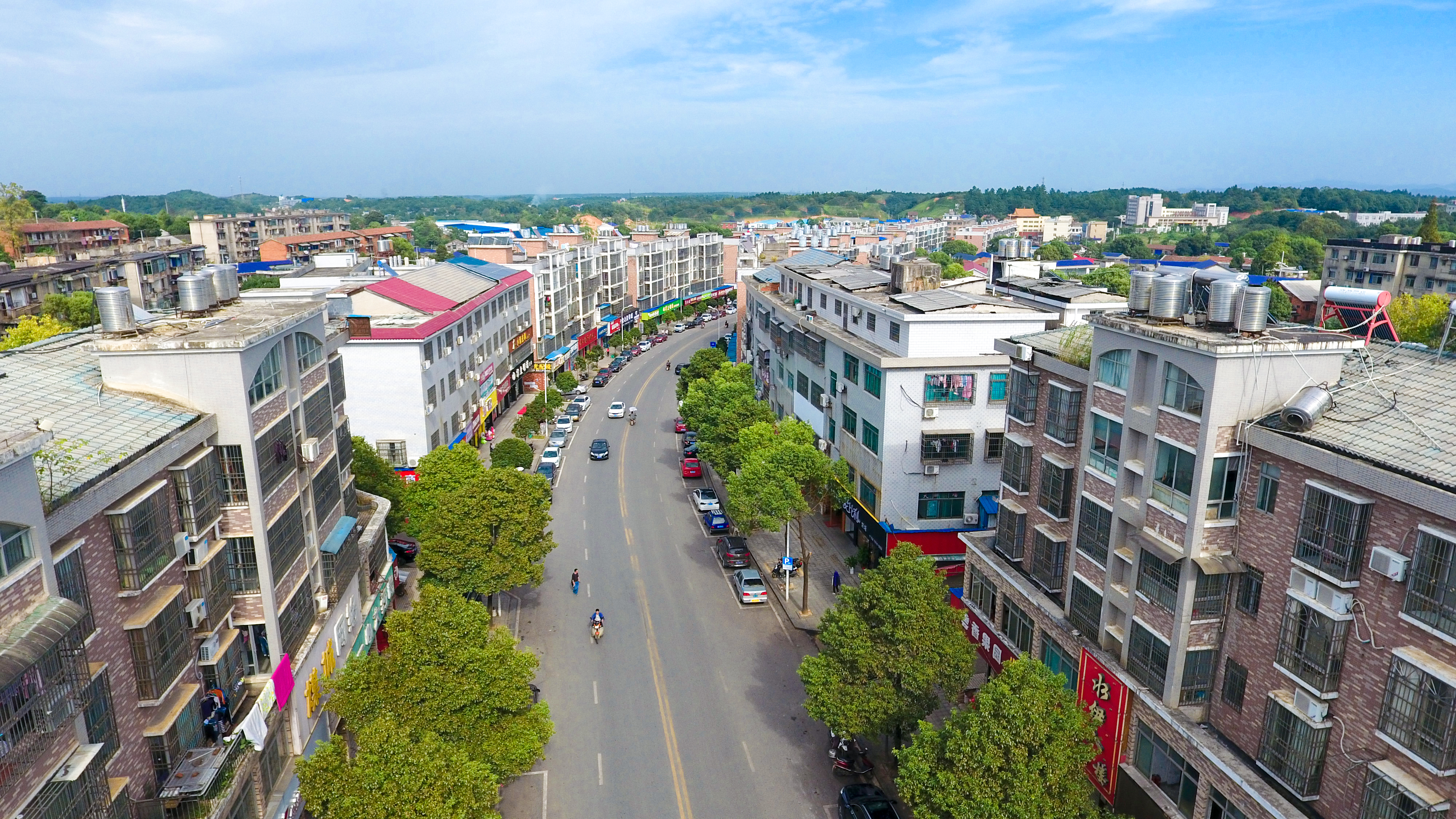 Ningxiang listed on China’s top 100 counties with comprehensive competitiveness
Ningxiang listed on China’s top 100 counties with comprehensive competitiveness  College welcomes a student of courage
College welcomes a student of courage  Changsha Blue Moon Valley Intelligent Home Appliances Industrial Town
Changsha Blue Moon Valley Intelligent Home Appliances Industrial Town  This is Ningxiang High-tech Zone
This is Ningxiang High-tech Zone 